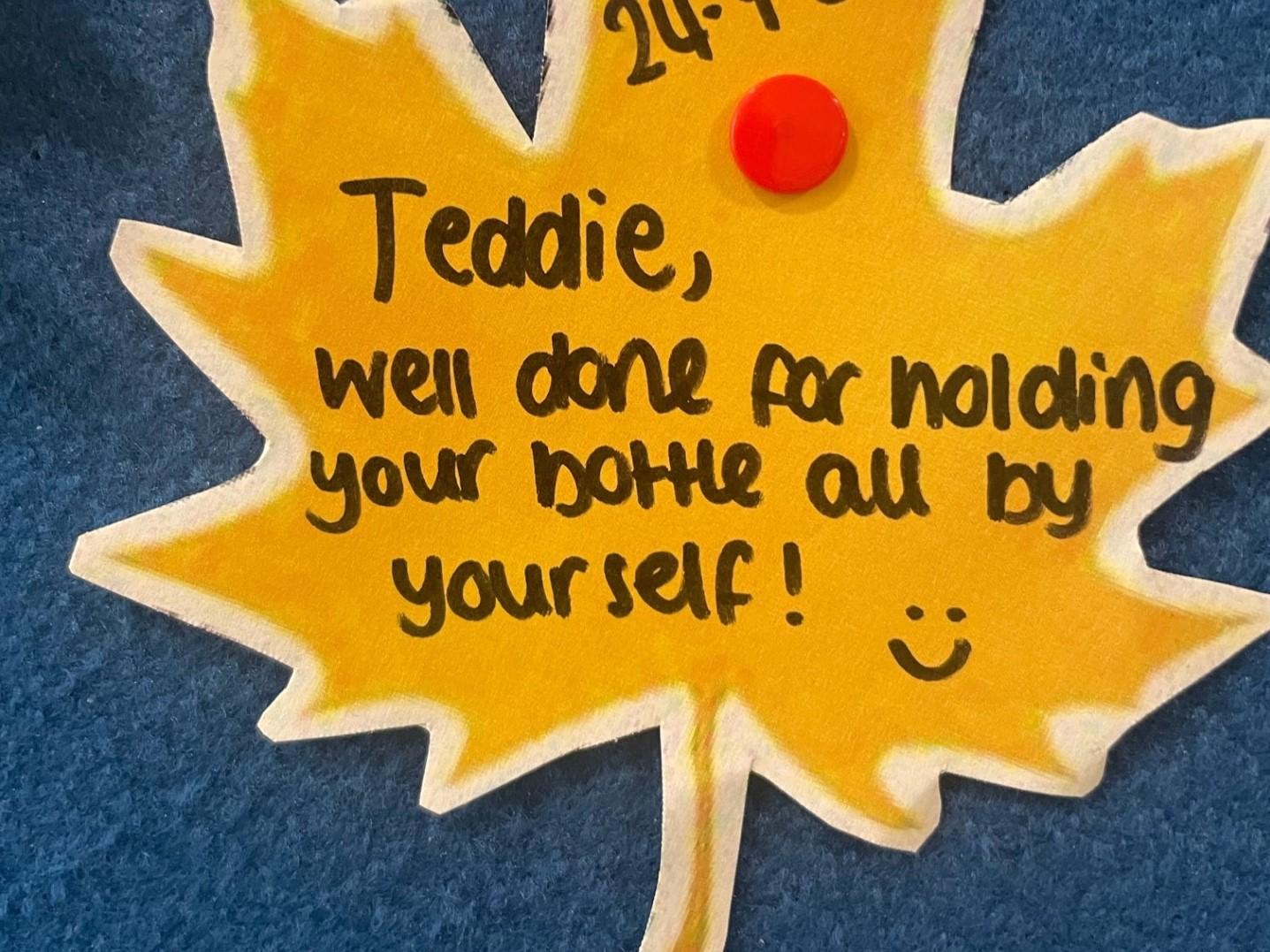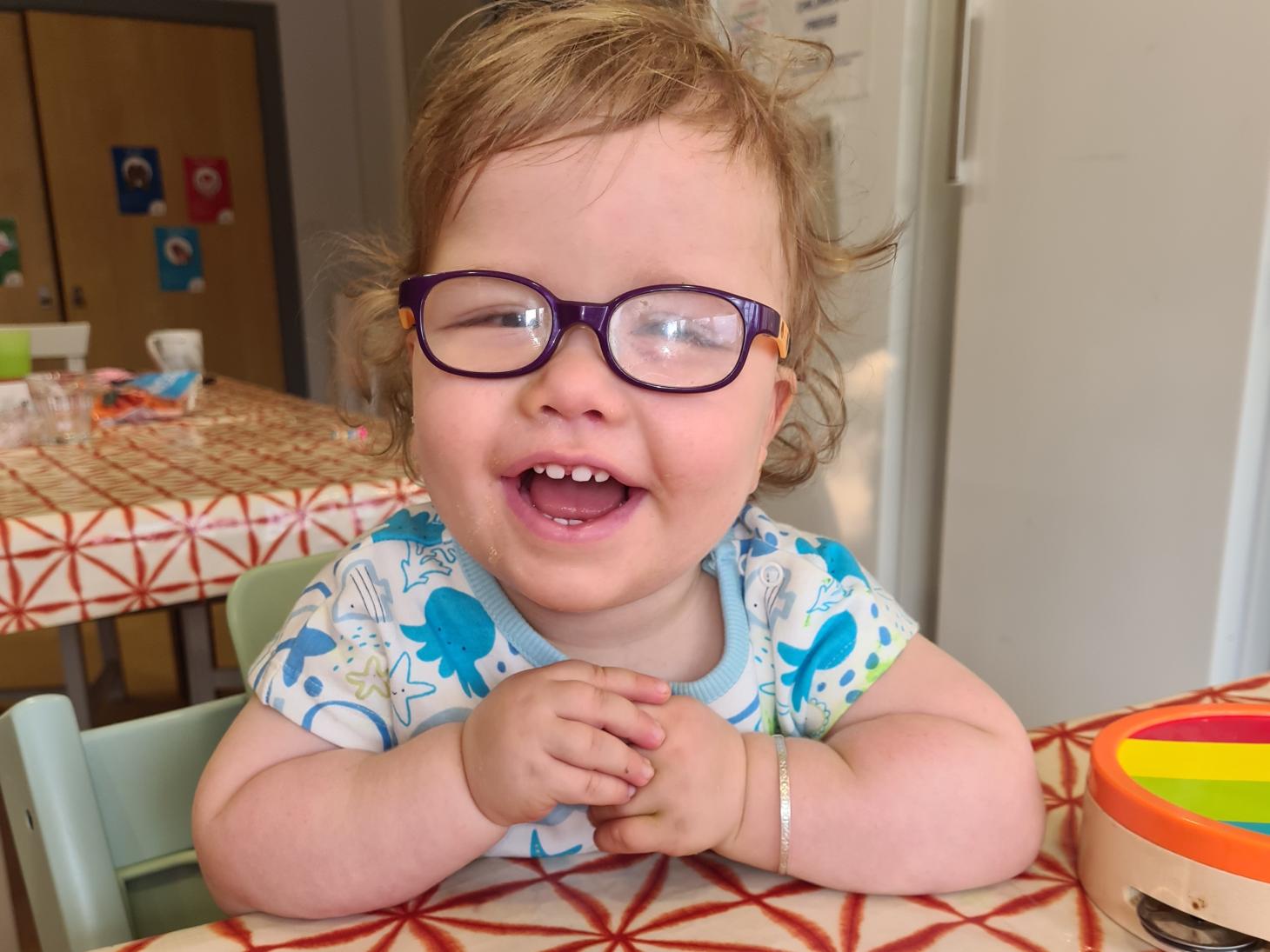Teddie was nine days old when he had his first seizure.
His parents immediately took him to hospital, where a scan revealed that there were problems with Teddie’s brain development.
Teddie’s parents had no sign in pregnancy that anything was wrong, but after being referred to St. George’s Hospital in South London he was diagnosed with Polymicrogyria, which means the surface of the brain has developed too many folds in it.
In hospital
For four months Teddie was in and out of the Intensive Care Unit with daily seizures – sometimes having up to 100 per day. Once he was stable, a neurologist referred him to Great Ormond Street Hospital where a team of doctors and healthcare professionals decided he needed surgery.
When Teddie was six months old, he underwent a hemispherectomy, which is a surgical procedure to disconnect the left-hand side of his brain.
After the surgery it wasn’t clear if Teddie would be able to use the right-hand side of his body at all. His parents were relieved when immediately after the surgery he could move his right side, but it was much weaker, and he was unable to use his right hand.
Back at home
Once recovered from the surgery, Teddie was discharged home where he received physiotherapy sessions from a local community service. As well as dealing with the effects of the surgery, his general development had been delayed due to his seizures and he had also lost the right-peripheral vision in both eyes. He was unable to sit up, crawl or hold things in his hand.
Teddie’s Mum, Laura, heard about The Children’s Trust while Teddie was being treated at Great Ormond Street Hospital and was keen for him to receive intensive rehabilitation.
Laura says: “We got to 7 or 8 months without any seizures, and I noticed that Teddie was doing more and trying to sit up. When he was 17 months old, I asked his paediatrician ‘can we try and go to The Children’s Trust now?’ She said yes and made the referral!”
Specialist rehabilitation
At The Children’s Trust, Teddie has a weekly timetable of therapies including physiotherapy, occupational therapy, play therapy and speech and language therapy.
Mum Laura shares with us how therapy has helped Teddie so far: “Occupational therapy has been really good for him because it’s really helped him to use his right hand. One of his goals was to put his biscuits on the table and for him to pick them up himself. I tried for ages to get him to do it and then in the last couple of weeks he’s started doing it!
“Holding his bottle was also big for me. When we started that was one of my goals. I asked could we try getting him to hold a bottle or sippy cup, because when he was thirsty I was having to stop and ask him if he needs a drink, but now I can have it in his pram and he can get it himself.
Teddie in an occupational therapy session
“Physiotherapy is another big help for him. He’s got AFOs [ankle foot orthoses] so he is now standing. He can stand up at a bench and if he’s playing with a toy you can let go and he’ll stand there. He’s also using a walking frame doing some little steps, and his sitting is really strong now – before physiotherapy he’d sit for a few seconds and fall.
“Teddie hasn’t said words yet, but we’ve lots of babbling and he makes different noises. In speech and language therapy they say ‘ready, steady…’ and he has to make any noise for ‘go’! They’ve also made him signs for ‘more’ and ‘stop’ and he has to look at which one he wants, or he’ll reach out and touch it.
“The tiny little things he’s doing are massive for us. He’s really doing us proud.”

One of Teddie's achievement leaves in Maple House
Medical support
At one point, Teddie was on six different medications to stop his seizures. With the support of the medical team at The Children’s Trust he has now reduced to just one. The benefit for Teddie is that this reduces the side effects of the medication.
One particular medication had negative side effects on Teddie's eyesight. Since reducing the medication his parents have noticed an improvement, meaning he can now make eye contact with people and is reaching out for objects.

Support for the whole family
Teddie’s Mum, Laura, has been able to stay with Teddie on Maple House during his residential placement – first in his room, and then in the parent’s accommodation on site.
Laura tells us: “Before coming to The Children’s Trust I didn’t get any help at home. Here when Teddie goes to bed in his room I can go over to the parent’s accommodation and I know he’s well looked after by the nursing staff and care staff. It means I’m getting a little break in the evening which is really good.”
“A couple of weeks ago I was able to get out and go to the theatre while my husband could come here and look after Teddie with the support of the staff and the other parents. I haven’t been able to leave my husband on his own with Teddie before because my husband has epilepsy – but here, I knew that he had the staff around and they were both safe. That was a really big thing for me.
“Up until now it’s always been me and Teddie so having some support is really nice.”
Highs and lows
Rehabilitation is a long process, bringing good and bad days.
Laura shares: “You really have to take each day as it comes – one day they can do really well, and the next day there might be something going on and they don’t do so well. We’ve had Teddie doing some really good steps in his walking frame, and now that he’s teething he doesn’t want to stand at all. At first you feel disheartened, but they will pick up and do it again.
“Also, they might not be doing something well that week because they’re developing somewhere else. All of a sudden, he’ll do something new and you’ll think ‘oh, that’s what you’re doing!’”
Laura continues: “Teddie loves people talking to him, he’s really sociable and loves a cuddle. Today a new staff member came in to give him his lunch and he just started giggling! Just because someone new was talking to him.”
Planning for the future
Teddie’s Mum is currently on a career break while she cares for Teddie. The Psychology Team at The Children’s Trust have been helping her plan for their next step.
To prepare the family for going home, the team have referred Teddie to a centre for children with special needs in their local area so that his therapy can continue. They are also working with a local pre-school to complete an education, health and care (EHC) plan so that they can access funding for Teddie to start attending pre-school one morning a week with one-to-one support.
Laura says: “Teddie’s had his struggles, but he’s such a strong little boy. Every time they say he won’t be able to do something, he’ll do it. He’s really strong.”
